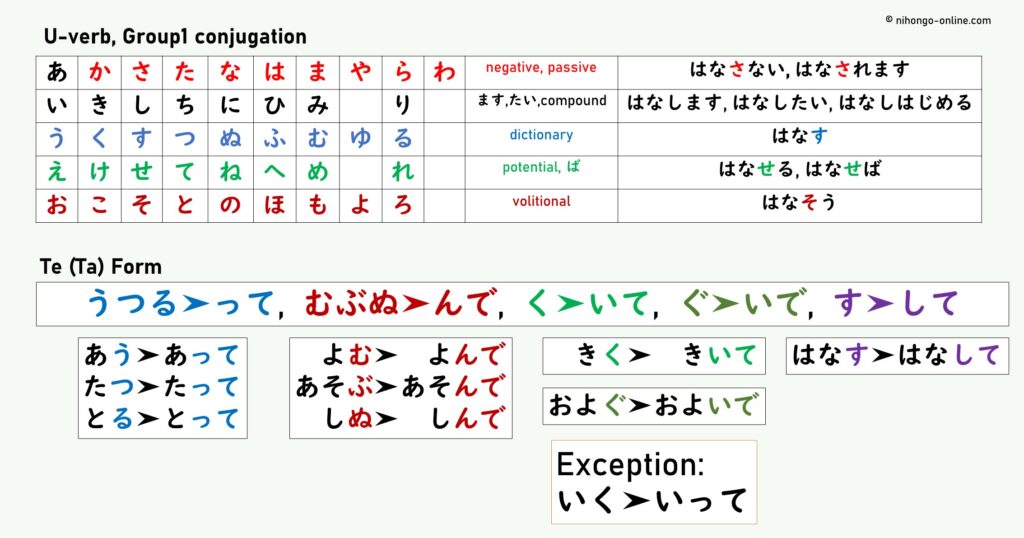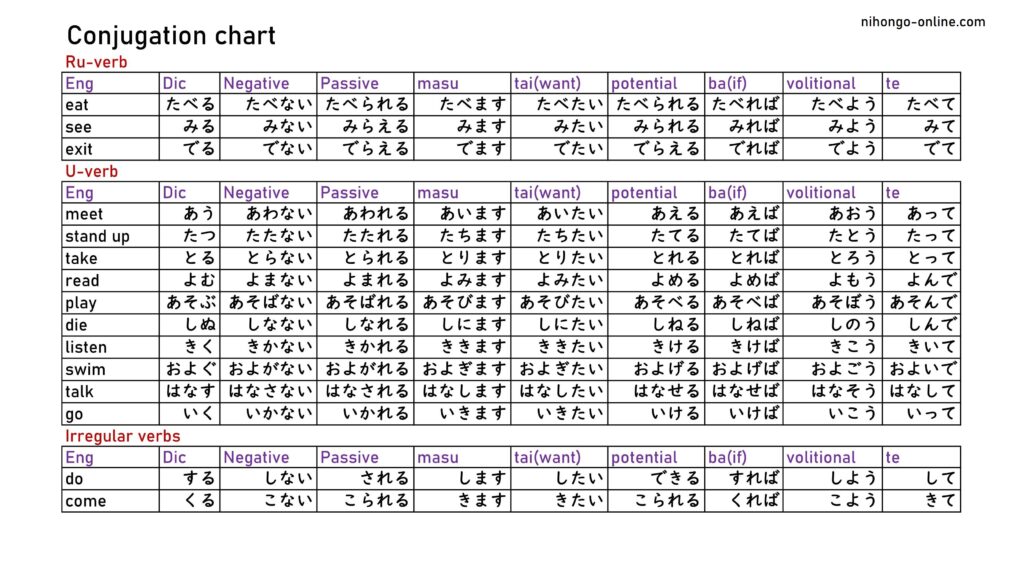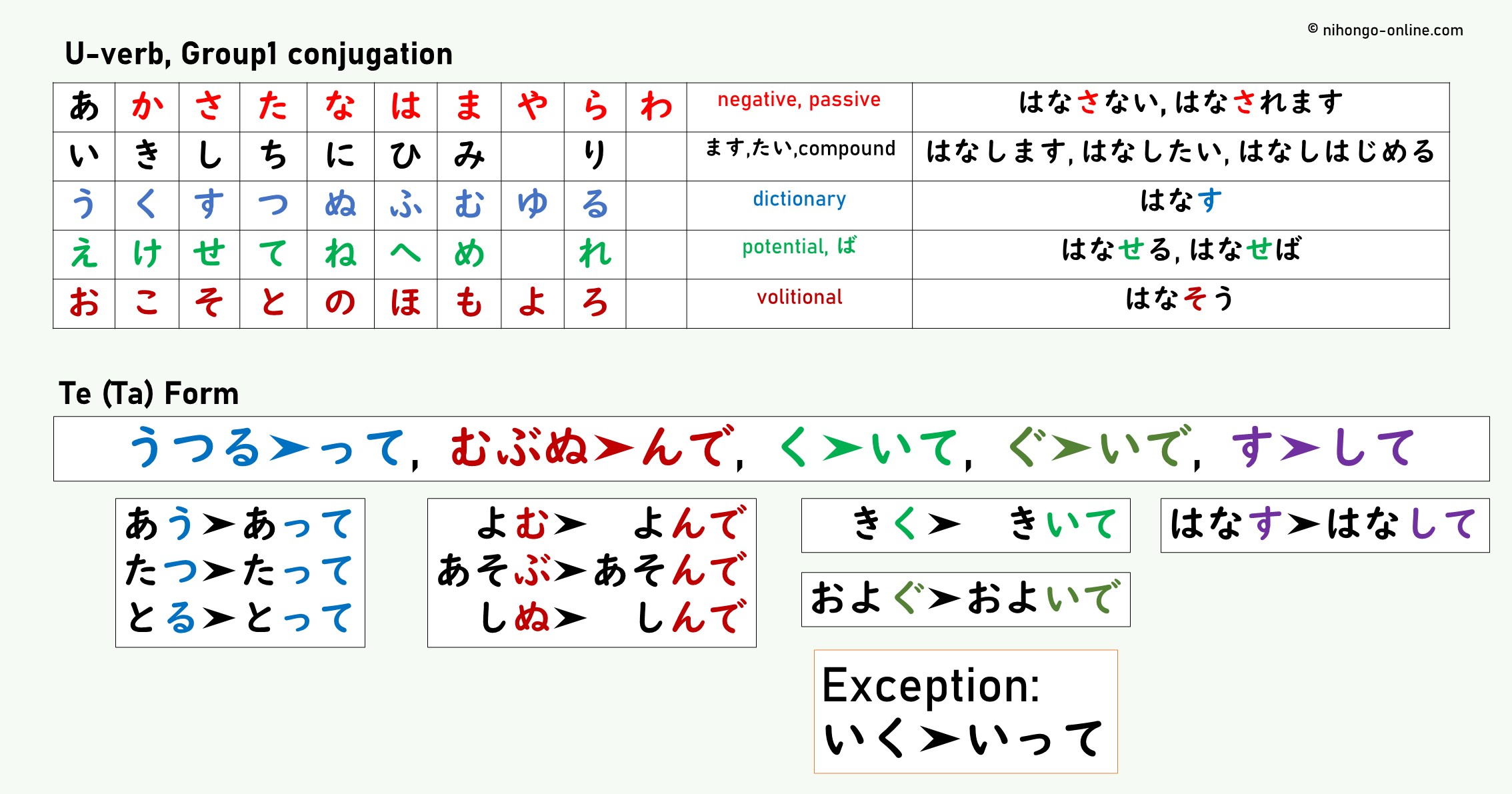TAKE JAPANESE LESSONS
Self-Study Materials
In Japanese, verbs are categorized into three groups: “U-verb” (Group I), “Ru-verb” (Group II), and irregular verbs “する” and “くる”. The conjugation of verbs varies depending on which group they belong to. Let’s explore these verb groups and their conjugation patterns.
Ru-verb, U-verb, Irregular verbs
Ru-verb: end with eru or iru
EXAMPLES
たべる (taberu) to eat
でる (deru) to exit
みる (miru) to see
あびる(abiru) to take a shower
U-Verb: end without eru or iru
EXAMPLES
のむ (nomu) to drink
いく (iku) to go
あう (au) to meet
とる (toru) to take
NOTE: There are a few exceptions such as はしる(hashiru, to run), はいる(hairu, to enter), きる(kiru, to cut). Those verbs end with eru or iru but they are u-verb, not ru-verb.
Irregular Verbs: する and くる
Irregular verbs are those two and their derived words such as べんきょうする(to study) and もってくる (to bring).
Conjugation Chart
Ru-verb:
Ru-verb conjugation is always simple. Just remove the final る and replace it with the appropriate endings such as ます, て, たい, etc.
U-verb:
It’s rather complecated and you might need to spend time to memorize the rules. Check the chart.

Verb Chart
When you come across a new verb, check the last Hiragana of its dictionary form and change it as in the chart below. Suppose you have a verb よろこぶ (to be happy). Last Hiragana is ぶ, so you can change the verb just like あそぶ in the chart.
よろこぶ➤よろこばない➤よろこばれる➤よろこびます…

By understanding these verb groups and their conjugation patterns, you can expand your knowledge of Japanese grammar and express yourself more accurately. Practice conjugating verbs regularly to improve your language skills!



コメント